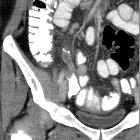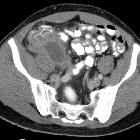acute appendicitis
























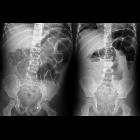
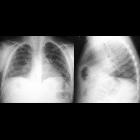
































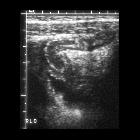




Appendicitis is inflammation of the vermiform appendix. It is a very common condition in general radiology practice and is one of the main reasons for abdominal surgery in young patients. CT is the most sensitive modality to detect appendicitis.
Epidemiology
Acute appendicitis is typically a disease of children and young adults with a peak incidence in the 2to 3 decades of life .
Clinical presentation
The classical presentation consists of periumbilical pain (referred) which within a day or later localizes to McBurney point with associated fever, nausea, and vomiting . This progression is only seen in a minority of cases and is unhelpful in children who often present with vague and non-specific signs and symptoms. It also relies on the appendix being in a 'normal' position, which is not the case in a significant number of cases (see below).
General signs and symptoms include :
- fever
- localized pain and tenderness
- right lower quadrant tenderness over appendix (i.e. McBurney sign)
- pelvic pain, diarrhea, and tenesmus (pelvic appendix)
- flank pain (retrocecal appendix)
- groin pain - appendix within an inguinal hernia (Amyand hernia) or a femoral hernia (De Garengeot hernia)
- right upper quadrant pain (subhepatic appendicitis )
- leukocytosis
- nausea and vomiting
- atypical location:
- within the pelvis (30%)
- extraperitoneal (5%)
- left iliac fossa (rare), found in patients with a long appendix, intestinal malrotation, situs inversus and those with a mobile cecum
The Alvarado score is a clinical score that can be useful to risk-stratify patients. In children clinicians sometimes use other scores such as a PAS or pARC score for the same purpose.
Pathology
Appendicitis is typically caused by obstruction of the appendiceal lumen, with the resultant build-up of fluid, suppurative inflammation, secondary infection, venous congestion, ischemia, and necrosis. Obstruction may be caused by :
- lymphoid hyperplasia (~60%)
- appendicolith (~33%)
- foreign bodies (~4%)
- Crohn disease or other rare causes, e.g. stricture, tumor, parasite
Radiographic features
One of the biggest challenges of imaging the appendix is finding it. Once confidently identified, assessing its normality is relatively straightforward.
Fecal loading of the cecum is associated with acute appendicitis, which is uncommon in other acute inflammatory diseases of the right side of the abdomen.
The location of the base of the appendix is relatively constant, located roughly between the ileocecal valve and the apex of the cecum. This relationship is maintained even when the cecum is mobile.
The location of the tip of the appendix is much more variable, especially as the length of the appendix has an extensive range (2-20 cm). The distribution of positions is described as :
- behind the cecum (ascending retrocecal): 65%
- inferior to the cecum (subcecal): 31%
- behind the cecum (transverse retrocecal): 2%
- anterior to the ileum (ascending paracaecal preileal): 1%
- posterior to the ileum (ascending paracaecal retroileal): 0.5%
Plain radiograph
Plain radiography is infrequently able to give the diagnosis, however, is useful for identifying free gas, and may show an appendicolith in 7-15% of cases . In the right clinical setting, finding an appendicolith makes the probability of acute appendicitis up to 90%.
If an inflammatory phlegmon is present, displacement of cecal gas with mural thickening may be evident.
Small bowel obstruction pattern with small bowel dilatation and air-fluid levels is present in ~40% of perforations.
Ultrasound
Ultrasound with its lack of ionizing radiation should be the investigation of choice in young patients. With a competent user, ultrasonography is reliable at identifying abnormal appendices, especially in thin patients. However, the identification of a normal appendix is more problematic, and in many instances, appendicitis cannot be ruled out.
The technique used is known as graded compression, using the linear probe over the site of maximal tenderness, with gradual increasing pressure exerted to displace normal overlying bowel gas.
Findings supportive of the diagnosis of appendicitis include :
- aperistaltic, non-compressible, dilated appendix (>6 mm outer diameter)
- appears round when compression is applied
- hyperechoic appendicolith with posterior acoustic shadowing
- distinct appendiceal wall layers
- implies non-necrotic (catarrhal or phlegmon) stage
- loss of wall stratification with necrotic (gangrenous) stages
- echogenic prominent pericaecal and periappendiceal fat
- periappendiceal hyperechoic structure: amorphous hyperechoic structure (usually >10 mm) seen surrounding a non-compressible appendix with a diameter >6 mm
- periappendiceal fluid collection
- target appearance (axial section)
- periappendiceal reactive nodal prominence/enlargement
- wall thickening (3 mm or above)
- mural hyperemia with color flow Doppler increases the specificity
- vascular flow may be lost with necrotic stages
- alteration of the mural spectral Doppler envelope
- may support diagnosis in equivocal cases
- a peak systolic velocity >10 cm/s suggested as a cutoff
- a resistive index (RI) measured at >0.65 may be more specific
Confirming that the structure visualized in the appendix is clearly essential and requires demonstration of it being blind-ending and arising from the base of the cecum. Identifying the terminal ileum confidently is also helpful.
A dynamic ultrasound technique using a sequential 3-step patient positioning protocol has been shown to increase the detection rate of appendix . In the study, patients were initially examined in the conventional supine position, followed by the left posterior oblique position (45° LPO) and then a “second-look” supine position. Reported detection rates increased from 30% in the initial supine position to 44% in the LPO position and a further increase to 53% with the “second-look” supine position. Slightly larger absolute and relative detection rates were seen in children. The authors suggested that the effect of the LPO positioning step improved the acoustic window by shifting bowel contents.
CT
CT is highly sensitive (94-98%) and specific (up to 97%) for the diagnosis of acute appendicitis and allows for alternative causes of abdominal pain also to be diagnosed. The need for contrast (IV, oral, or both) is debatable and varies from institution to institution. Oral contrast has not been shown to increase the sensitivity of CT .
CT findings include :
- appendiceal dilatation (>6 mm diameter)
- wall thickening (>3 mm) and enhancement
- thickening of the cecal apex: cecal bar sign, arrowhead sign
- periappendiceal inflammation
- fat stranding
- thickening of the lateroconal fascia or mesoappendix
- extraluminal fluid
- phlegmon (inflammatory mass)
- abscess
- focal wall nonenhancement representing necrosis (gangrenous appendicitis) and a precursor to perforation
Less specific signs may be associated with appendicitis:
- appendicolith
- periappendiceal reactive nodal enlargement
MRI
MRI is recommended as the second-line modality for suspected acute appendicitis in pregnancy patients, where available . Protocols vary widely, but most include imaging in three planes with a rapidly acquired sequence with T2 weighting, and some include T2 fat-suppressed imaging. MRI findings mirror those of other modalities, with luminal distension and widening, wall thickening, and periappendiceal free fluid.
Treatment and prognosis
Treatment is appendectomy, which can be performed either open or laparoscopically . Mortality from simple appendicitis is approximately 0.1% but is as high as 5% in perforation with generalized peritonitis .
In ~30% of cases where the appendix has become gangrenous and perforated, initial nonoperative management is preferred provided the patient is stable. It is in this situation that radiologists have a therapeutic role to play with percutaneous CT- or US-guided drainages of periappendiceal abscess.
Complications
Recognized complications include :
- perforation: in 10-20% of cases
- most specifically suggested by appendiceal abscess or extraluminal air, but commonly also seen as periappendiceal phlegmon and fluid
- generalized peritonitis due to free perforation
- pylephlebitis: infective thrombophlebitis of the portal circulation
- hepatic abscess
Differential diagnosis
Clinically, the most common differential is that of mesenteric adenitis, which can be differentiated by the identification of a normal appendix and enlarged mesenteric lymph nodes.
The imaging differential includes:
- inflammatory bowel disease, especially Crohn disease, which may affect the appendix
- other causes of terminal ileitis
- appendiceal mucocele
- lymphoid hyperplasia
- pelvic inflammatory disease (PID)
- right-sided diverticulitis
- appendiceal diverticulitis
- Meckel diverticulitis
- acute epiploic appendagitis
- omental infarction
- appendiceal malignancy
- Valentino syndrome (from perforated peptic ulcer)
- enlarged normal appendix as almost 50% of asymptomatic patients can have an appendix diameter greater than 6 mm on CT
Practical points
- on CT, identify first the ileocecal valve, which usually has fatty lips, and then look for the appendix more inferiorly on the same side
- >6 mm outer diameter is a reliable measurement to characterize appendicitis in all imaging modalities
- Inflammation may be initially limited to the distal end of the appendix (tip appendicitis). It is crucial (particularly with US) to completely evaluate the appendix, and consider further assessment with cross-sectional imaging if it is only partially visualized, but the patient is clinically suspicious
- Prior appendectomy does not completely rule out a recurrent stump appendicitis, the risk of which is significant if the appendiceal remnant is greater than 5 mm
- Appendiceal endometriosis is not uncommon, affecting 4-22% of patients with endometriosis, and is a challenging diagnosis on imaging. Nodular, inhomogeneous appendiceal thickening combined with unspecific, often cyclical symptoms can be hints of this condition

 Assoziationen und Differentialdiagnosen zu Appendizitis:
Assoziationen und Differentialdiagnosen zu Appendizitis:













